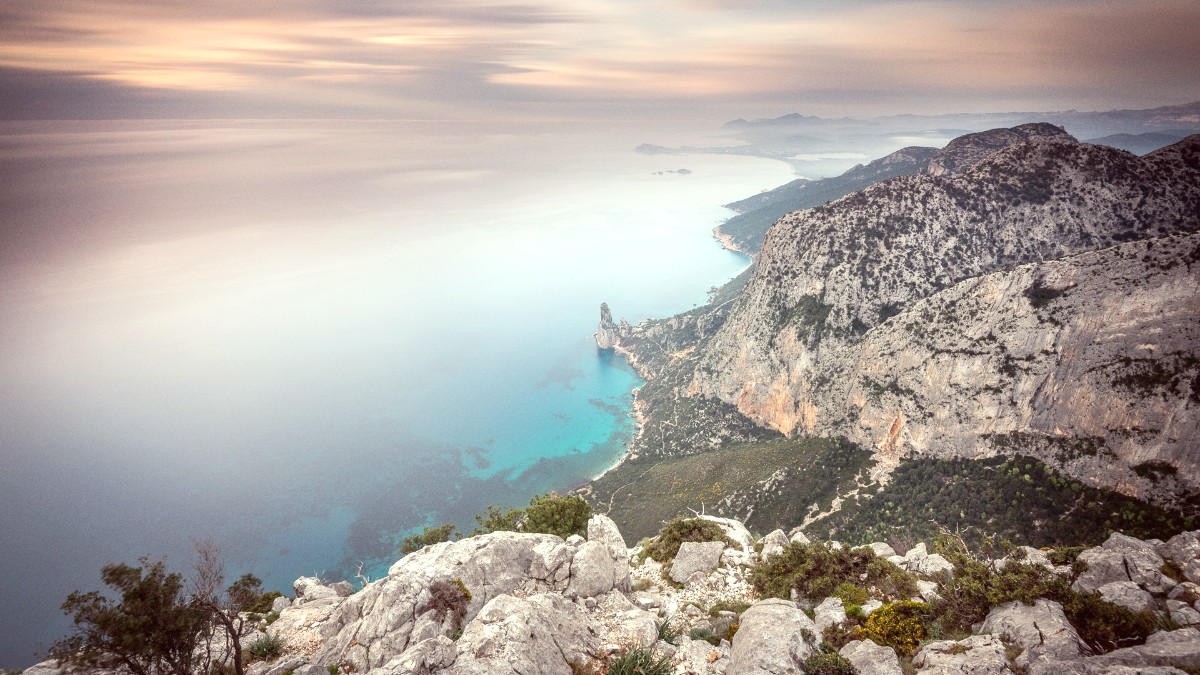
Sardinia, Italy
Sardinian cuisine differentiates from mainland Italian fare, shaped by its pastoral and maritime history. Its food emphasizes robust, earthy flavors, fresh, seasonal ingredients, and ancient cooking methods.
The cuisine reflects Sardinia's long history of self-sufficiency, with a strong focus on local produce, sheep and goat products, and seafood from its extensive coastline.
Lunch ("pranzo") typically from 1 PM to 2:30 PM. Dinner ("cena") usually from 8 PM to 10 PM or later, especially in summer. Many restaurants close between lunch and dinner service.
A "coperto" (cover charge, usually €1-€3 per person) or "servizio" (service charge, usually 10-15% of the bill) may apply. This is normal practice, separate from a tip.
Wait to be seated. Dining is a social experience; do not rush. Italians consume espresso quickly, often standing at the bar. Cappuccino is a breakfast drink, rarely ordered after noon.
A whole roasted suckling pig, with tender meat and crispy skin. Chefs slow-cook it for hours, often over an open fire.
A true Sardinian specialty at agriturismi or traditional restaurants.
Small, toasted pasta beads served with fresh seafood, like clams, mussels, and sometimes bottarga.
A common coastal dish, showing the freshness of local seafood.
Small semolina pasta shells with a rich sausage and tomato sauce. Often topped with grated Pecorino Sardo cheese.
A hearty, traditional Sardinian pasta.
A sweet fried pastry filled with fresh Pecorino cheese, flavored with lemon or orange zest, and generously drizzled with warm honey. A delightful dessert.
Small, sweet pastries filled with ricotta cheese, often flavored with lemon or orange.
Some restaurants present a refined dining experience. These establishments highlight fresh, local ingredients, creative interpretations of Sardinian cuisine, and often pair well with wine.
Numerous trattorias and osterias exist throughout Bosa, especially in the historic center and along the Temo River. These restaurants offer traditional Sardinian and Italian dishes.
For affordable options, look for pizzerias offering whole pizzas or "pizza al taglio" (pizza by the slice). Bars often serve sandwiches ("panini"). Bakeries ("panetterie") sell fresh bread, focaccia, and pastries.
Bosa's culinary scene is predominantly Italian and Sardinian.
Limited international cuisine is available; for wider variety, visit larger Sardinian cities.
Fresh seafood is abundant. Malvasia di Bosa wine is a local specialty.
Dining out is a social and unhurried experience. Local markets are excellent for fresh ingredients. Try local liqueurs like Mirto.
Daily municipal market for fresh produce.
Purchase local cheese, meat, and fish.
An ideal spot for picnic ingredients.
Good for cooking your own meals.
Gluten-free ("senza glutine") awareness is growing. Some restaurants may have gluten-free pasta or bread, especially with advance notice. For severe allergies, clear communication is important.
Consider carrying a Translation card explaining restrictions. Supermarkets have gluten-free products.
Options for halal and kosher food are limited or non-existent. Bosa is a small, traditional town.
Travelers with these requirements should plan to self-cater or choose vegetarian options.
Pane Carasau: This thin, crispy bread is often served as a snack with olive oil and salt, or alongside meals.
Local food traditions align with seasons and festivals. Seafood is freshest and most abundant in spring and summer. Artichokes are prevalent in spring. During specific festivals, you might find unique traditional sweets or savory dishes.
Some local agriturismi or specialized tour operators may conduct Sardinian cooking classes. These classes often focus on making traditional pasta, bread, or desserts.
Many agriturismi conduct tours of their farms, cheese-making demonstrations, or wine tastings. Nearby vineyards producing Malvasia di Bosa wine often greet visitors for tastings and direct sales.
Bosa hosts local food events, especially during the summer or harvest season. These events often celebrate Malvasia wine or specific seafood products.
Try to learn a few Italian food-related phrases: "Sono vegetariano/a" (I am vegetarian), "Senza glutine" (gluten-free), "Senza lattosio" (lactose-free).
"Acqua naturale/frizzante" (still/sparkling water) is also useful.
Check local tourism calendars for food events and festivals.
Remember coperto/servizio charges are common and not tips. Lunch and dinner times are later than some countries, plan accordingly.
Bosa's coastal location means a stronger emphasis on fresh seafood in many local dishes.
The Bosa area is especially known for its Malvasia di Bosa wine, a sweet and often fortified dessert wine. A unique tasting experience.
Mirto and Limoncello are popular choices for a digestivo after a meal, often served chilled.
Sardinian cuisine is distinct, with robust flavors from local produce, sheep and goat products, and seafood.